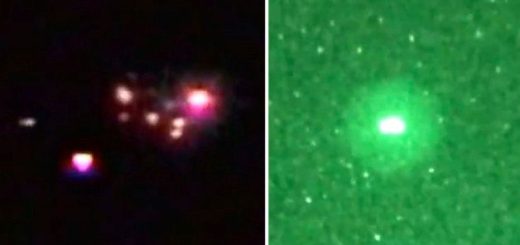This fresh meteoroid impact on Mars triggered a dusty avalanche

A small space rock crashed into Mars recently, and NASA has captured an amazing view of its crater grave site, as well as the trail from an avalanche triggered by the impact.
The new Mars crater was likely caused by a meteoroid impact within the past 10 years, NASA officials explained in an image description. NASA’s Mars Reconnaissance Orbiter (MRO)spotted the crater from orbit, and the agency released the image on June 15.
“The crater itself is only 5 meters [16.5 feet] across, but the streak it started is 1 kilometer long!” NASA officials wrote. “Slope streaks are created when dry dust avalanches leave behind dark swaths on dusty Martian hills. The faded scar of an old avalanche is also visible to the side of the new dark streak.” [Latest Photos by NASA’s Mars Reconnaissance Orbiter]
The impact crater is tiny, but the mark it left, as you can see in the image, is massive. When the meteoroid that caused this crater hit Mars, it destabilized the slope it collided with, which caused an avalanche of Martian dust, dirt and sand. This event left a dark streak, known as a slope streak, across the Martian surface. And as NASA pointed out, you can still see the “scar” from an older avalanche nearby.
HiRISE, or High Resolution Imaging Science Experiment
Sights like the long, dark streaks on a Martian hill are not uncommon on the surface of the Red Planet. And researchers agree that these dark slope streaks are caused by dust avalanches.
The Martian surface is covered in sand, dirt and dust granules, and the planet is known to have storms and be struck by meteoroids. (A meteoroid is a small rock in space. When it enters an atmosphere and flares up, it is known as a meteor. Any fragments that reach the surface are called meteorites.)
However, for years, scientists have pondered the origins of these marks. Previously, researchers suggested that these dark streaks could be caused by transient, flowing briny water, perhaps indicating that Mars is habitable, as many have suspected over time. Researchers thought that subterranean water could have been rising to the surface and causing the dark streaks. This theory was supported when MRO detected hydrated salts in these streaks. Some even suggested that the streaks were caused by seasonal carbon-dioxide frost. However, a study published last spring in the journal Nature Geoscience points to avalanches as the leading cause of the streaks.
MRO took this spectacular new impact-crater image using HiRISE, or High Resolution Imaging Science Experiment, which was built by Ball Aerospace & Technologies Corp., of Boulder, Colorado,and is operated by the University of Arizona. HiRISE has taken some of the most spectacular and detailed images of the Martian surface to date.
NASA’s MRO spacecraft launched to Mars in August 2005 and arrived in early 2006. It has been studying the Red Planet from orbit ever since.



 Creators of mankind
Creators of mankind Description of “Tall white aliens”
Description of “Tall white aliens” Where they came from?
Where they came from? About hostile civilizations
About hostile civilizations The war for the Earth
The war for the Earth “Tall white aliens” about eternal life
“Tall white aliens” about eternal life Video: “Nordic aliens”
Video: “Nordic aliens” Aliens
Aliens Alien encounters
Alien encounters The aliens base
The aliens base UFO
UFO Technology UFO
Technology UFO Underground civilization
Underground civilization Ancient alien artifacts
Ancient alien artifacts Military and UFO
Military and UFO Mysteries and hypotheses
Mysteries and hypotheses Scientific facts
Scientific facts


















